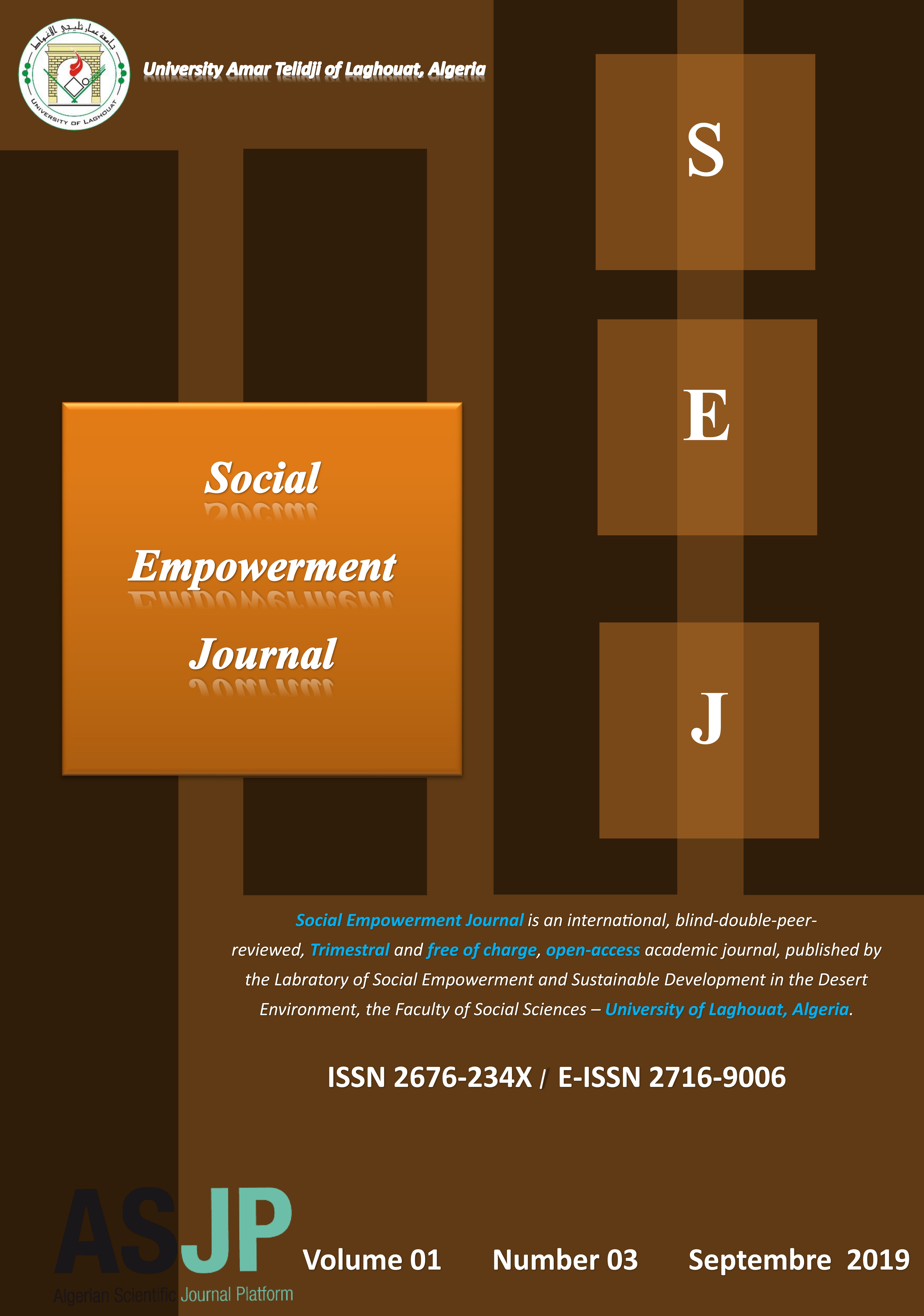Travail des enfants: Analyse du phénomène en Tunisie (Étude de cas un exemple appliqué)
تشغيـــل الأطفـــال: تحليل الظاهرة في تونس (دراسة حالة مثالا تطبيقيا)
Abstract
Dans cet article, nous allons étudier le phénomène de l’exploitation des enfants en les faisant travailler. En fait, c’est un manifeste social et problème humaniste essentiellement. Il faut bien observer à l’intérieur de ce phénomène qui parait de nos jours dans notre société civilisé qui est submergé par l’égoïsme et le matérialisme. D’ailleurs ces facteurs négatifs ont un grand rôle dans l’apparition de ces phénomènes sociaux et aussi bien développement dans le monde entier.
La majorité des enfants qui travaillent sont invisibles hors de notre et hors d’atteinte des lois. Beaucoup d’enfants ne sont pas seulement exploités, leur droits à l’éducation, à des soins médicaux, de base, à une nutrition adéquate aux loisirs ainsi qu’à même une vie protégée et sans danger dans leur famille et leur communautés sont également bafoués.
Il faut donc lutter contre ce phénomène et aussi le contrôler. D’ailleurs, il va y avoir l’étude de trois cas différents pour faire une récapitulation concernant ceci.-
Downloads
References
- Arabic references in English:
Al-Ittifaqiya al-Duwaliyya. (2000). Article 182, Article 3, ratified by Tunisia.
(International Convention, 2000, Article 182, Article 3, ratified by Tunisia).
Ittifaqiyat Huquq al-Atfal. (1989). Adopted by the United Nations General Assembly, entered into force on September 2, 1990, according to Article 32.
(Convention on the Rights of the Child, 1989, adopted by the United Nations General Assembly, entered into force on September 2, 1990, according to Article 32).
Edmonds, E. Understanding the Negative Aspects of Child Labor: Patterns, Types, and Approaches. Retrieved from http://usinfo.stage.gov.journals/sites/0505/ijea/edmonds.htm
Ben Salah, Najah. (2004). Lecture in the course on protection mechanisms in Tunisian law, Higher Institute of the Judiciary, p. 3.
(Ben Salah, Najah, 2004, Lecture in the training course on protection mechanisms in Tunisian law, Higher Institute of the Judiciary, p. 3).
Khamekhim, R., & Qatran, H. (1996). Majallat Himayat al-Atfal – Annotated by: Ministry of Women, Family, and Childhood – UNICEF, Tunisian Republic.
(Khamekhim, R., & Qatran, H., 1996, Child Protection Journal – Annotated by: Ministry of Women, Family, and Childhood – UNICEF, Tunisian Republic).
Zayn al-Din al-Tufayli, Imtithal. (2004). Ilm Nafs al-Numu: Min al-Tufulah ila al-Shaykhukhah, Dirasah Tahliliyyah li-l-Sulūk wa-l-Mi'ash al-Insani. Dar al-Manhil al-Lubnani li-l-Ṭibā'ah wa-l-Nashr.
(Zayn al-Din al-Tufayli, Imtithal, 2004, Developmental Psychology: From Childhood to Old Age, An Analytical Study of Behavior and Human Life, Dar al-Manhil Lebanese Publishing House).
Farfinkel, Harold. (n.d.). American Sociologist, founder of the new approach "Ethnomethodology" and inventor of this term.
(Farfinkel, Harold, n.d., American Sociologist, founder of the new approach "Ethnomethodology" and inventor of this term).
Finman, M. (2005). Executive Director of UNICEF. State of the World’s Children Report. London: Retrieved from www.unicef.org/sowc06
(Finman, M., 2005, Executive Director of UNICEF, State of the World’s Children Report, London, Retrieved from www.unicef.org/sowc06).
Majallat al-Shughl fi Tunis. (1996). Article 53, amended by Law No. 62 of 1996.
(Journal of Labor in Tunisia, 1996, Article 53, amended by Law No. 62 of 1996).
Munaḥada al-Istibad. Program for Child Labor, Retrieved from www.Antislavery.org/homepage/antislavery/arachildlabour.htm
(Anti-Slavery, Child Labor Program, Retrieved from www.Antislavery.org/homepage/antislavery/arachildlabour.htm).

This work is licensed under a Creative Commons Attribution-NonCommercial 4.0 International License.









